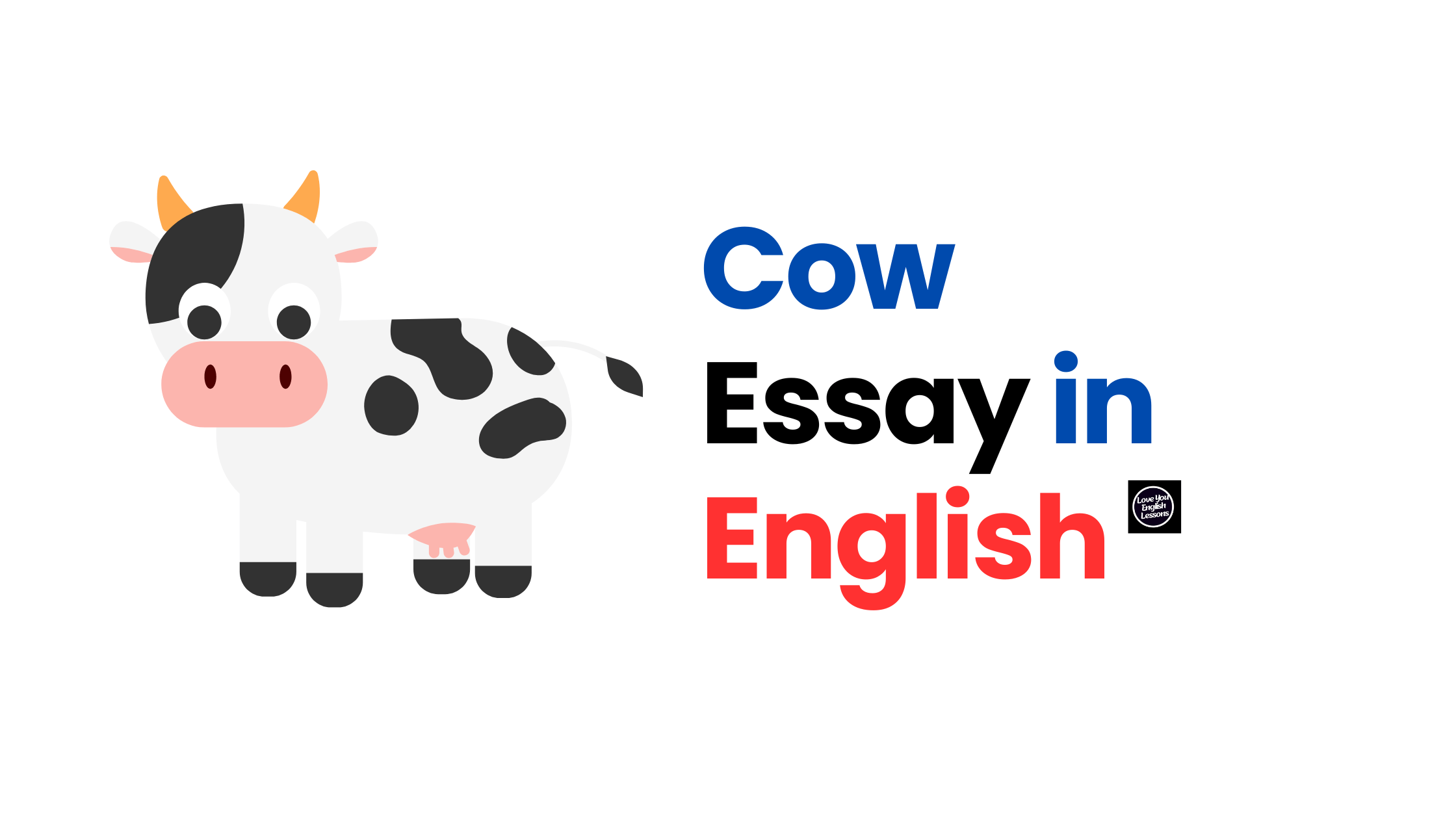The Cow Essay in English for Students
Essay About the Cow for Students and Children
The cow is one of the most common and useful animals in the world.
It is a domestic animal that has been helping humans for thousands of years.
In many countries, the cow is valued for its role in agriculture, milk production, and cultural importance.
I will explain why cows are so special, their features, how they help us, and why we should take care of them.
What Does a Cow Look Like?
A cow is a large, sturdy animal. It has four legs, two sharp horns, a long tail, and a big nose.
Its ears are small and alert, and its kind eyes are big and expressive.
The cow’s skin comes in different colors like white, black, brown, or a mix of these.
Covered in short hair, cows also have a special stomach that helps them digest food slowly and efficiently.
Types of Cows
Cows are found all over the world, and they serve different purposes.
Some are kept for milk, others for meat, and some help with farming.
Here are the main types of cows:
- Dairy Cows: These cows produce a lot of milk. Popular breeds include Holstein, Jersey, and Gir.
- Beef Cows: These are raised for meat, such as Angus and Hereford breeds.
- Working Cows: In the past, cows were used to pull carts or plows, especially in rural areas.
The Cow as a Milk Producer
Cows are mostly kept for their milk.
Milk is a vital part of many diets because it is both nutritious and delicious.
It contains calcium for strong bones and teeth and proteins that make us healthy.
From cow’s milk, we make:
- Butter
- Cheese
- Yogurt
- Ice cream
These products are enjoyed by people of all ages.
The Cow’s Role in Farming
Cows are very helpful on farms. In the past, before tractors, farmers used cows to plow fields and carry goods.
Even today, in some parts of the world, cows are still used for these tasks.
Cow dung is another valuable product. It is a natural fertilizer that improves soil and helps crops grow better.
Dried cow dung can even be used as fuel for cooking or heating.
The Cow in Culture and Religion
In many cultures, cows hold a special place. In India, for example, the cow is sacred and worshipped by many people. It symbolizes peace, motherhood, and generosity.
During festivals, cows are decorated with flowers and colorful fabrics. Special food is offered to them as a sign of respect and gratitude.
How Cows Help the Environment
Cows benefit the environment in several ways:
- Natural Fertilizers: Cow manure enriches the soil without harmful chemicals.
- Biogas Production: Cow dung can be used to produce biogas, a clean and renewable energy source.
- Grazing: Grazing cows help maintain grasslands and support the ecosystem.
How to Take Care of Cows
Caring for cows is essential for their health and happiness. Here’s how we can care for them:
- Food and Water: Cows need plenty of fresh grass, hay, and clean water. Farmers often give them special feed for better nutrition.
- Shelter: Cows should have clean, safe shelters to protect them from harsh weather.
- Health: Regular veterinary check-ups and vaccinations keep cows healthy.
- Kindness: Cows are gentle and respond well to love and care.
Why Should We Protect Cows?
Cows are an important part of human life. They give us food, energy, and help with farming.
Protecting cows also benefits the environment and preserves cultural values.
Here’s why we should protect cows:
- They provide milk, which is essential for nutrition.
- Their manure supports sustainable farming.
- They symbolize peace and harmony in many cultures.
- They contribute to renewable energy through biogas production.
Fun Facts About Cows
- Cows eat for about 8 hours a day and can consume up to 40 pounds of food daily.
- They are social animals and live in groups called herds.
- Cows can recognize and bond with other cows in their herd.
- A cow’s sense of smell is so strong it can detect scents from six miles away!
- The average lifespan of a cow is 15 to 20 years.
Conclusion
The cow is a remarkable animal that helps humans in many ways, from providing milk to improving the environment.
By taking care of cows and treating them with respect, we show our gratitude for all they do for us.
Cows teach us kindness, patience, and sharing.
They are not just animals but an essential part of our lives and culture.
Let’s protect and care for these gentle creatures to ensure a better future for all.







